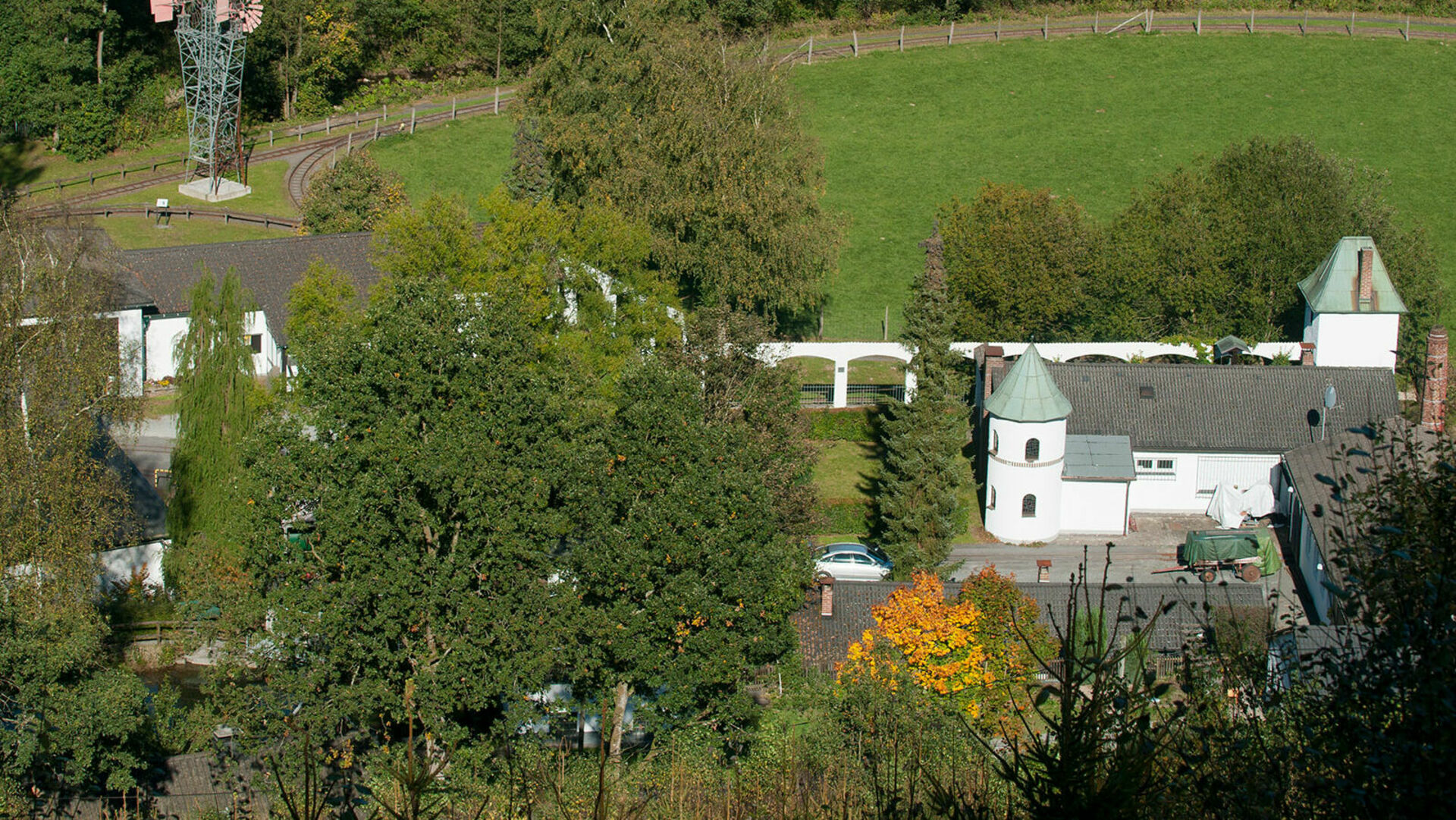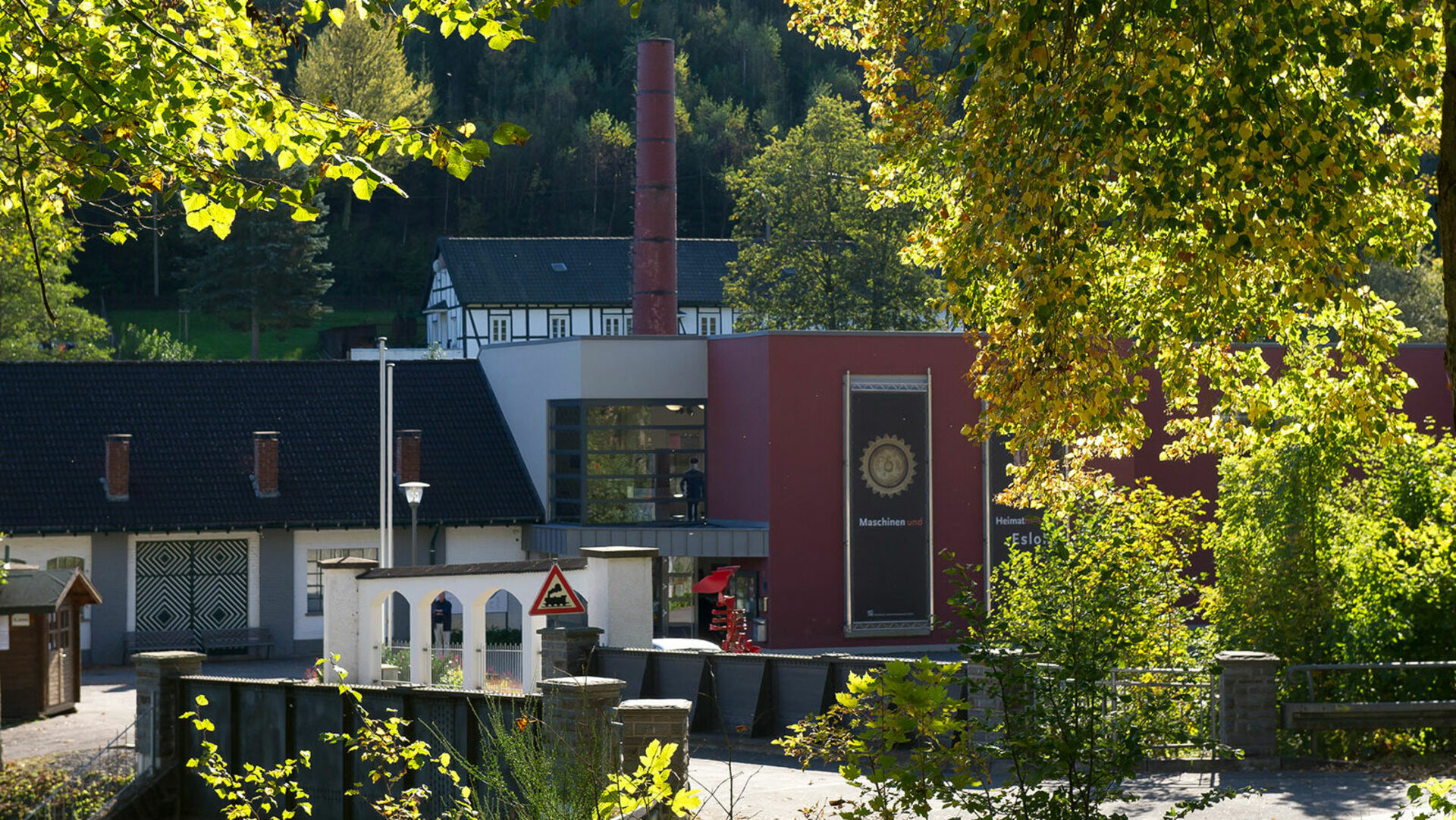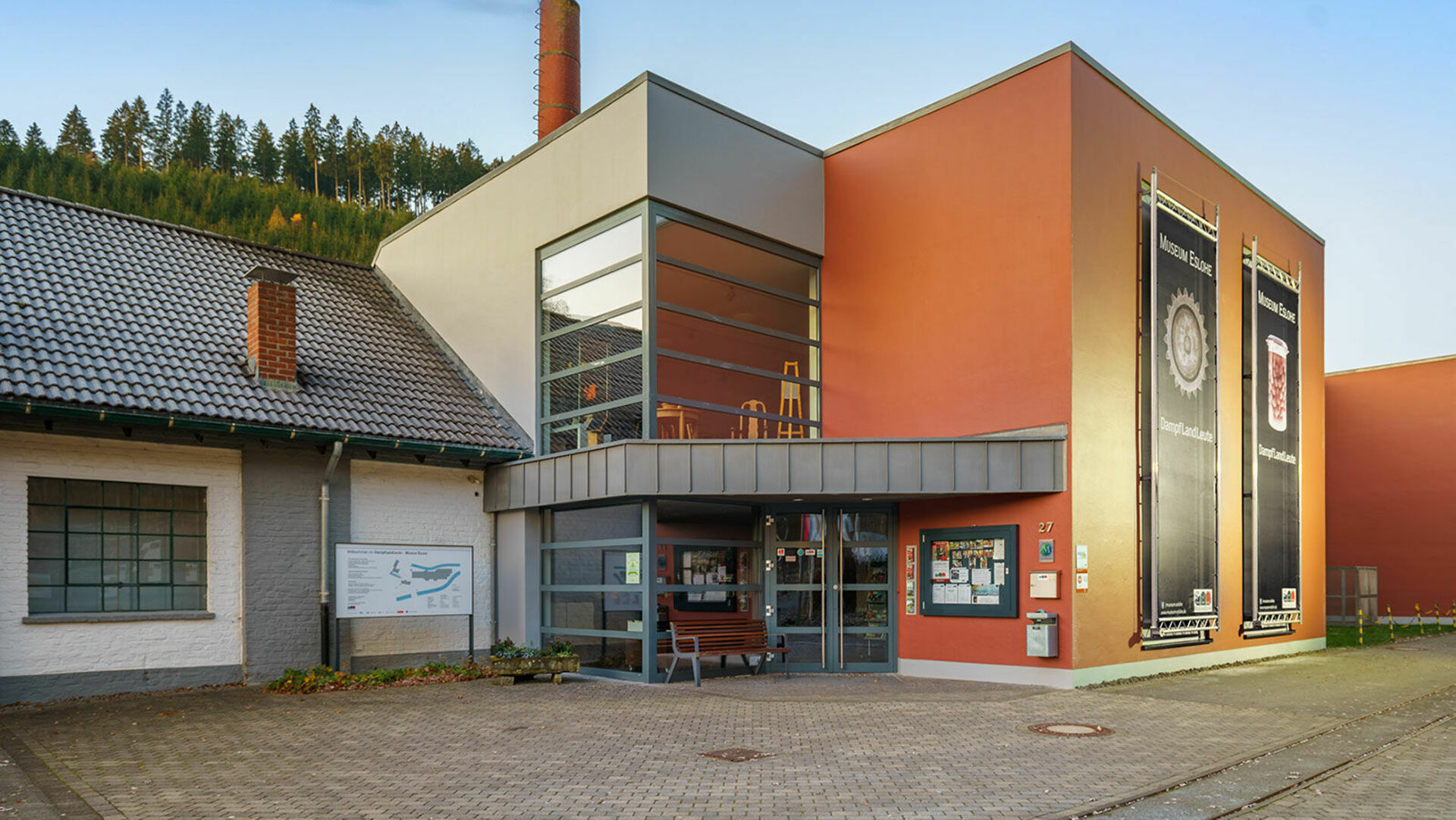Workers' houses Am Hammer
A tool factory changes a region
In the 19th century, industrialization changed the lives of many people. Small craft businesses were usually unable to compete with the more efficient factories. With the construction of the Am Hammer workers' houses, the factory owner of the time was thinking ahead. He wanted to retain workers and their families by offering them comparatively good housing for rent. Today, the houses belong to the DampfLandLeute Museum Eslohe. Like the factory's hydroelectric power plant, they are listed buildings because they are exemplary of industrialization on the one hand, but also of a preliminary form of social housing on the other.
The copper hammer in Niedereslohe was one of the oldest hammers in Westphalia. As early as 1497, there was a documented hammer mill here, which was powered by a mill. Ownership changed frequently over the centuries. In 1825, Christoph Gabriel received the concession for the Niederesloh hammer and industrialized the business. Initially there was a copper hammer on this site, later a steel hammer and finally a refining hammer. In 1870, Gabriel founded a tool factory at this location. The trades were considered progressive at the time, as the factory voluntarily offered its workers a company health insurance fund. The workers' houses were probably also built at the same time. One reason was certainly to retain staff. At that time, there were many migrant workers who frequently changed location. However, it was risky for the factory not to have a permanent workforce.
Originally built for factory workers and their families, the half-timbered houses at Am Hammer 18 and 20 are listed buildings due to their historical significance. They are located in the immediate vicinity of the former tool factory. A comparison with photos from the 18th/19th century shows that the houses with their half-timbered ground floor and gable roof construction were rebuilt and extended several times. Doors and windows were added, closed or relocated as required by the residents. At least one of the houses was extended, recognizable by the missing half-timbering on the eaves side. The gables were or are completely or partially clad with wood or slate and sometimes had windows or flaps that no longer exist today. The hydroelectric power plant, which is fed from an upper ditch, is also a listed building. The water drives the museum's turbine system - which used to be part of the factory.
As industrialization progressed, small craft businesses often had to give up because they were no longer competitive with their manual work. Many men and women moved to industrial locations to find a regular income. The working day in factories was 12 hours or more. Previously sedentary people were on the move to chase job offers. They often lived in the poorest conditions. Accommodation like the Am Hammer was a rare innovation. Nothing is known about the early tenants of the houses - not even how many families lived here together and whether they had many children.
The current owner of the workers' houses is the Eberhard Foundation König. König's father took over the ailing Gabriel tool factory in 1930. As Eberhard König was childless, he set up a foundation to support the museum, among other things. König's collection of technical monuments is also on display.
Today, the workers' houses are still rented out by the Koenig Foundation.
Vertelleken
Chatting out of the sewing box...
Various stories show how the Gabriel tool factory in Niederesloh influenced the region over the course of time. The village blacksmith Johann Joseph Pieper was the last of his guild in Sallinghausen. The factory made "Schmies Schmiedchen" on the banks of the Mühlengraben unprofitable. His son Johann was one of the first trained metalworkers to work in the tool factory. Without the factory Eslohe probably not have a railroad station either - at least not at this location. When the railroad line from Finnentrop to Wennemen was built, the station did not come to the village center, but was built with a factory connection at the instigation of the factory owner Ferdinand Gabriel. After all, without the last owner and his Koenig Foundation, many local measures would not be possible today. In 1993, the capital assets amounted to 7 million euros; the foundation financed, for example, the museum, a retirement home and an indoor swimming pool.














